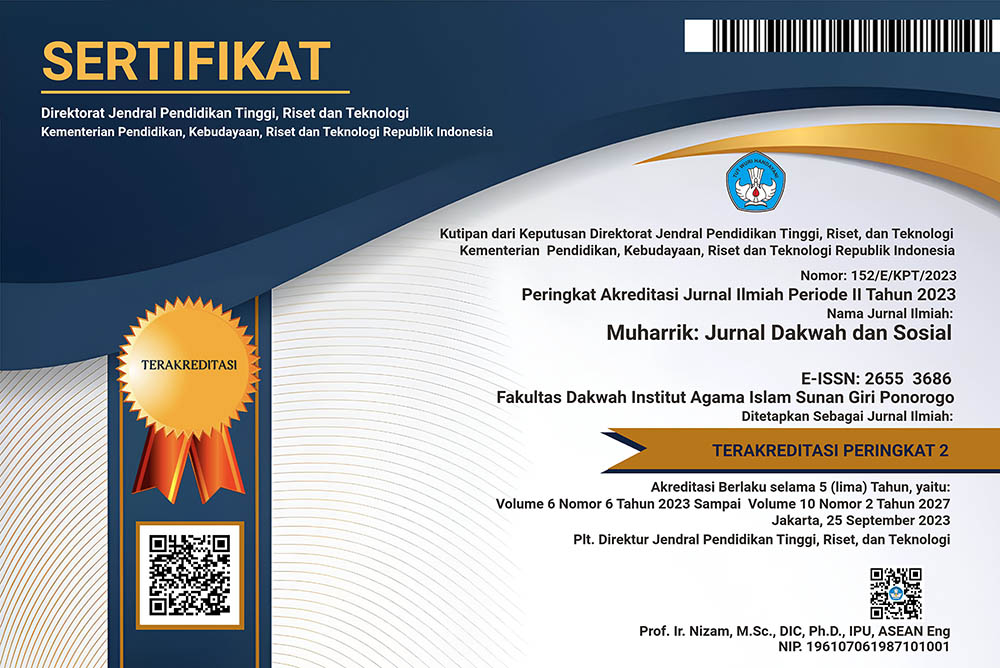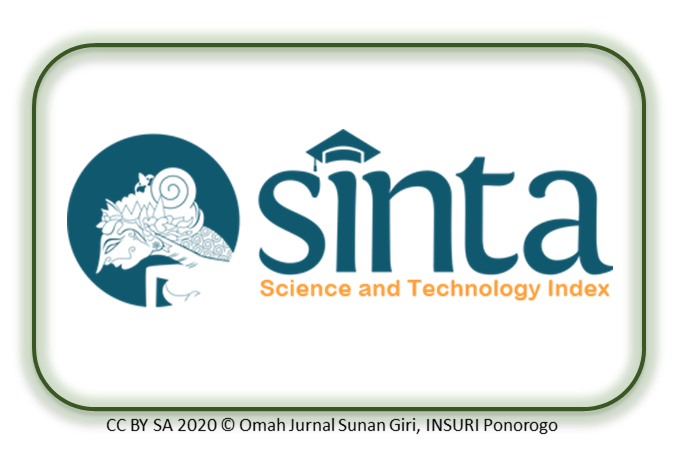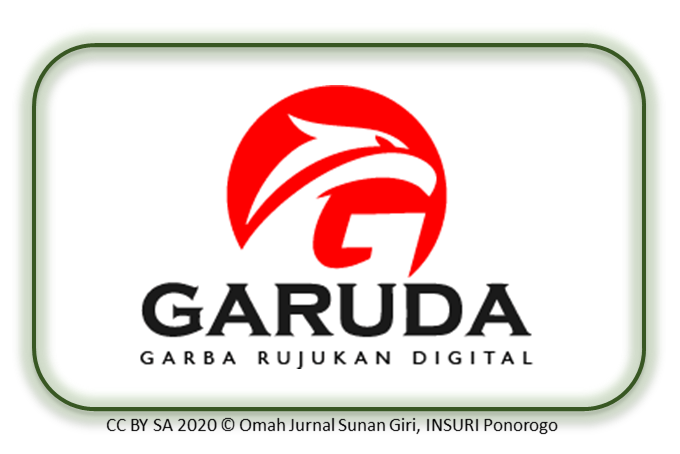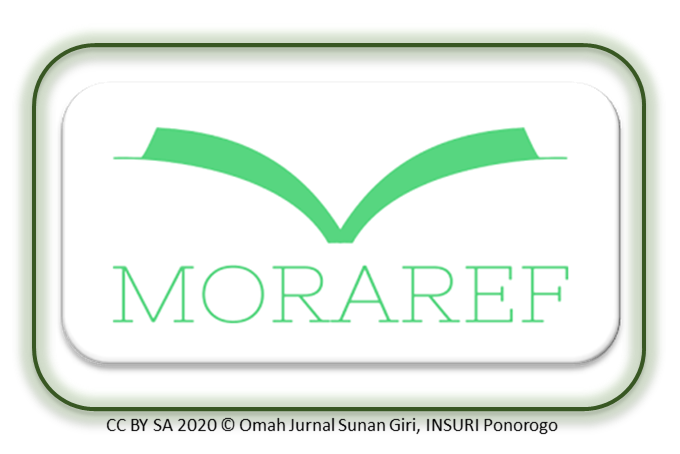Transforming Public Communication in Hajj Services: A Contextual Model of KBIHU-Based Information Strategies in North Sumatra
DOI:
https://doi.org/10.37680/muharrik.v8i1.7728Keywords:
Public Communication Model, Implementation Policy, Hajj, Information ServiceAbstract
This study examines the effectiveness of public communication strategies implemented by Hajj and Umrah Guidance Groups (KBIHU) in North Sumatra within the framework of the Hajj implementation policy. While existing research on Hajj services largely focuses on logistics, health, and administrative systems, limited attention has been given to how the state communicates with pilgrims in a manner responsive to socio-cultural diversity and public trust challenges. This study addresses that gap by analysing how information services are designed, delivered, and received in a religious public service context. Using a qualitative descriptive approach, data were collected through in-depth interviews, participatory observation, and document analysis involving Ministry of Religious Affairs officials, KBIHU managers, and Indonesian Hajj Brotherhood Association representatives. The findings reveal that public communication is dominated by one-way dissemination, lacks active involvement of local actors, and suffers from inconsistency in information delivery. These limitations hinder transparency, reduce trust in official channels, and increase reliance on informal sources. The study proposes a more participatory and adaptive communication framework that integrates two-way interaction, cultural sensitivity, and continuous engagement before, during, and after the Hajj season. The theoretical contribution lies in positioning this framework within the Situational Crisis Communication Theory (SCCT), extending its application to a socio-religious public service setting. This approach strengthens state legitimacy by reframing Hajj communication as administrative information delivery and as a trust-building process grounded in accountability, inclusion, and cultural context.
Downloads
References
Abdoh, E. S. (2025). Utilizing information technology to address challenges in Hajj and Umrah: A narrative review. In Journal of Information Studies & Technology (JIS&T) (Vol. 2025, Issue 2). Hamad bin Khalifa University Press (HBKU Press). https://doi.org/10.5339/jist.2025.12
Alghamdi, H. M., & Mostafa, A. (2024). Towards Reliable Healthcare LLM Agents: A Case Study for Pilgrims during Hajj. In Information (Vol. 15, Issue 7, p. 371). MDPI AG. https://doi.org/10.3390/info15070371
Allam, R. (2021). From flabby to fit: Restructuring the public broadcasting system in Egypt. In Global Media and Communication (Vol. 17, Issue 3, pp. 297–320). SAGE Publications. https://doi.org/10.1177/17427665211023978
Basahel, S., Alsabban, A., & Yamin, M. (2021). Hajj and Umrah management during COVID-19. In International Journal of Information Technology (Vol. 13, Issue 6, pp. 2491–2495). Springer Science and Business Media LLC. https://doi.org/10.1007/s41870-021-00812-w
BBC Indonesia. (2025). Jemaah haji Indonesia keluhkan pelayanan transportasi bus, ketersediaan tenda hingga jadwal kegiatan – Di mana pangkal masalahnya? BBC News Indonesia. https://www.bbc.com/indonesia/articles/cx2xjz758eqo
Coombs, W. T. (2022). Situational Crisis Communication Theory (SCCT): Refining and Clarifying a Cognitive-Based Theory of Crisis Communication. In Handbook of Crisis Communication (pp. 193–204). https://doi.org/10.1002/9781119678953.ch14
Coombs, W. T., & Tachkova, E. R. (2023). Integrating Moral Outrage in Situational Crisis Communication Theory: A Triadic Appraisal Model for Crises. Management Communication Quarterly, 37(4). https://doi.org/10.1177/08933189221151177
Creswell, J. W., & Creswell, J. D. (2022). Research Design: Qualitative, Quantitative, and Mixed Methods Approaches 6th edition - John W. Creswell, J. David Creswell - SAGE. In SAGE Publications, Inc.
Edmonds, W. A., & Kennedy, T. D. (2020). An Applied Guide to Research Designs: Quantitative, Qualitative, and Mixed Methods. In An Applied Guide to Research Designs: Quantitative, Qualitative, and Mixed Methods. https://doi.org/10.4135/9781071802779
Febianti, F., & Farida, I. (2020). THE EFFECTIVENESS OF INTEGRATED HAJJ INFORMATION AND COMPUTERIZATION SYSTEM (SISKOHAT) IN THE HAJJ PILGRIMAGE IN SUMEDANG REGENCY. JHSS (JOURNAL OF HUMANITIES AND SOCIAL STUDIES), 4(2). https://doi.org/10.33751/jhss.v4i2.2455
Flick, U. (2022). The SAGE Handbook of Qualitative Research Design. In The SAGE Handbook of Qualitative Research Design. https://doi.org/10.4135/9781529770278
Gutomo, T. C., & Harliantara, H. (2025). Human Interest Feature as Public Communication Strategy Hajj Pilgrimage 2024. In representamen (Vol. 11, Issue 1, pp. 15–30). Universitas 17 Agustus 1945 Surabaya. https://doi.org/10.30996/representamen.v11i01.11661
Hawari, H. (2025). Gunakan Visa Kerja, 117 Calhaj RI Ditangkal Masuk Saudi dan Dipulangkan. Detik Hikmah. https://www.detik.com/hikmah/haji-dan-umrah/d-7918449/gunakan-visa-kerja-117-calhaj-ri-ditangkal-masuk-saudi-dan-dipulangkan
Hikmah, K., Amrullah, M., Ammar, F. M., & Yuliyanti, S. (2023). Response of Pulgher Hajj and Umrah: Arabic Language as a Practical Communication. In Academia Open (Vol. 8, Issue 2). Universitas Muhammadiyah Sidoarjo. https://doi.org/10.21070/acopen.8.2023.7272
Hrivnák, M., Moritz, P., Melichová, K., Roháčiková, O., & Pospišová, L. (2021). Designing the participation on local development planning: From literature review to adaptive framework for practice. In Societies (Vol. 11, Issue 1). https://doi.org/10.3390/soc11010019
Hussain, O., Felemban, E., & Rehman, F. U. (2021). Optimization of the Mashaer Shuttle-Bus Service in Hajj: Arafat-Muzdalifah Case Study. In Information (Vol. 12, Issue 12, p. 496). MDPI AG. https://doi.org/10.3390/info12120496
Irawati, N., Sundjoto, S., & Rahayu, S. (2024). The Influence of Service Quality of the Integrated Hajj and Umrah Service Center (PLHUT) on the Satisfaction of Prospective Hajj Pilgrims in 2023 (Study at the Mojokerto Regency Ministry of Religion Office). In JETISH: Journal of Education Technology Information Social Sciences and Health (Vol. 3, Issue 1, pp. 760–770). Rayyan Jurnal. https://doi.org/10.57235/jetish.v3i1.2158
Kamboh, S. A. (2024). Crisis communication for public organizations: Examining Pakistan Railways’ use of information technology and social media for image repair. Journal of Contingencies and Crisis Management, 32(1). https://doi.org/10.1111/1468-5973.12496
Khakim, A. (2025). The 2024 hajj special committee: Analyzing the complexities of social and media realities through the lens of social construction theory. In Islamic perspective on Communication and Psychology (Vol. 2, Issue 1). Institute for Advanced Science, Social, and Sustainable Future. https://doi.org/10.61511/ipercop.v2i1.2025.1645
Konold, D., & Schwietring, T. (2021). The great discrepancy: Political action, sustainable development and ecological communication. Politics and Governance, 9(1). https://doi.org/10.17645/pag.v9i1.3631
Liu, X. (2021). Crisis information, communication strategies and customer complaint behaviours: the case of COVID-19. Tourism Review, 76(4), 962–983. https://doi.org/10.1108/TR-01-2021-0004
Miles, M. B., Huberman, M., & Saldana, J. (2020). Qualitative Data Analysis-A Methods Sourcebook -4th edition. In SAGE (Vol. 53, Issue 9).
Moises, D. R. J., Kgabi, N. A., & Kunguma, O. (2024). Policy implementation: Assessing institutional coordination and communication for flood warning in Namibia. In Jàmbá Journal of Disaster Risk Studies (Vol. 16, Issue 1). AOSIS. https://doi.org/10.4102/jamba.v16i1.1534
Nurhanudin, N. (2021). Designing a Disaster Recovery Plan Using NIST 800-34 Framework on the Information System of The Directorate General of Hajj and Umrah. JURNAL SISFOTEK GLOBAL, 11(2). https://doi.org/10.38101/sisfotek.v11i2.391
Paek, H. J. (2021). Information Communication Technologies (ICTs), Crisis Communication Principles and the COVID-19 Response in South Korea. In Journal of Creative Communications (Vol. 16, Issue 2, pp. 213–221). https://doi.org/10.1177/0973258620981170
Pamuji, A., Muzaki, M., & Setiawan, H. S. (2022). Design of Web-Based Hajj Manasik Supervision Certification Information System. In International Journal of Advances in Data and Information Systems (Vol. 3, Issue 2, pp. 58–65). Indonesian Scientific Journal. https://doi.org/10.25008/ijadis.v3i2.1235
Poonia, R., Dalal, P., & Singh, V. P. (2024). Hybrid Optimization Approach for Handoff Strategy–Based Spectrum Allocation in Cognitive Radio Network. In International Journal of Communication Systems (Vol. 38, Issue 2). Wiley. https://doi.org/10.1002/dac.6078
Ravi, C., Pathak, P., & Gandhi, P. (2025). Smart Urbanization in India: Engagement, Participation, and Citizenship in Pune Smart City. In Inclusive Cities and Global Urban Transformation (pp. 31–39). Springer Nature Singapore. https://doi.org/10.1007/978-981-97-7521-7_3
Setiawan, A. I. (2021). New Culture of Indonesian Hajj Pilgrims: A Virtual Ethnographic Study of Smart Hajj Applications. In Ilmu Dakwah: Academic Journal for Homiletic Studies (Vol. 15, Issue 1, pp. 217–237). Sunan Gunung Djati State Islamic University of Bandung. https://doi.org/10.15575/idajhs.v15i1.13006
Shambour, M. K., & Gutub, A. (2023). Personal Privacy Evaluation of Smart Devices Applications Serving Hajj and Umrah Rituals. Journal of Engineering Research (Kuwait), 11(2). https://doi.org/10.36909/jer.13199
Shambour, M. K. Y. (2021). Assessing the Usability of Hajj and Umrah Websites. In 2021 International Conference on Information Technology (ICIT) (pp. 876–881). IEEE. https://doi.org/10.1109/icit52682.2021.9491780
Showail, A. J. (2022). Solving Hajj and Umrah Challenges Using Information and Communication Technology: A Survey. IEEE Access, 10. https://doi.org/10.1109/ACCESS.2022.3190853
Siregar, M. A. N., & Alda, M. (2023). Hajj Regsitration Information Systems Based On Mobile Using Quota Base Method. In ZERO: Jurnal Sains, Matematika dan Terapan (Vol. 7, Issue 2, p. 117). UIN Sumatera Utara Medan. https://doi.org/10.30829/zero.v7i2.19227
Syukri, N. A. A., Khairunisa, L., Christiadji, C., & Rachmawati, E. (2025). Review of Management Flow and Risk Factors of Dehydration in Hajj Pilgrims at the Surabaya Debarkation Hajj Dormitory: a case report. In Proceeding Annual Symposium on Hajj and Umrah Medicine (Vol. 2, p. 49). Maulana Malik Ibrahim State Islamic University. https://doi.org/10.18860/anshar.v2i0.3302
Taibah, H., Arlikatti, S., Andrew, S. A., Maghelal, P., & DelGrosso, B. (2020). Health information, attitudes and actions at religious venues: Evidence from hajj pilgrims. International Journal of Disaster Risk Reduction, 51. https://doi.org/10.1016/j.ijdrr.2020.101886
Thabran Talib, M., Meilany, L., & Sukawan, A. (2021). Analysis of the Management Information System Application Related with Service Data at Hajj Regional General Hospital of Makassar. KnE Life Sciences. https://doi.org/10.18502/kls.v6i1.8598
Weyant, E. (2022). Research Design: Qualitative, Quantitative, and Mixed Methods Approaches, 5th Edition. Journal of Electronic Resources in Medical Libraries, 19(1–2). https://doi.org/10.1080/15424065.2022.2046231
Zhang, C. (2022). Feature Extraction of Color Symbol Elements in Interior Design Based on Extension Data Mining. Mathematical Problems in Engineering, 2022. https://doi.org/10.1155/2022/5151336
Zheng, Q. (2023). Restoring trust through transparency: Examining the effects of transparency strategies on police crisis communication in Mainland China. Public Relations Review, 49(2). https://doi.org/10.1016/j.pubrev.2023.102296
Downloads
Published
How to Cite
Issue
Section
License
Copyright (c) 2025 Farhan Indra

This work is licensed under a Creative Commons Attribution-NonCommercial 4.0 International License.
The author(s) retain/s the copyright and grant/s Muharrik: Jurnal Dakwah dan Sosial the first publication rights licensed under the Creative Commons Attribution-NonCommercial 4.0 International (CC BY-NC 4.0) , which allows others to access (search, read, download and quote), share (copy and redistribute the material in any media or format) and adapt (mix, modify and develop) works for legitimate non-commercial purposes, with recognition of the authorship of the work and its initial publication in this journal.












